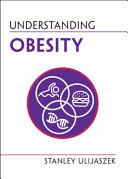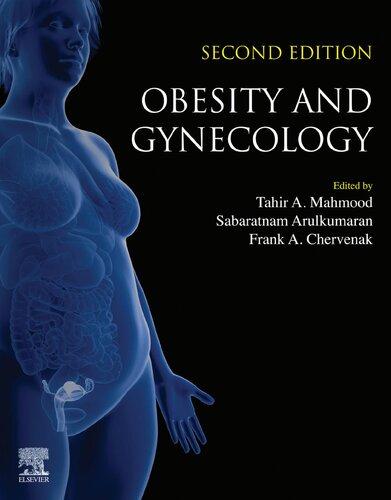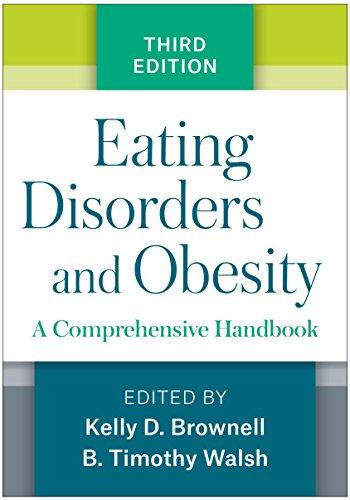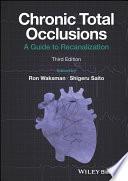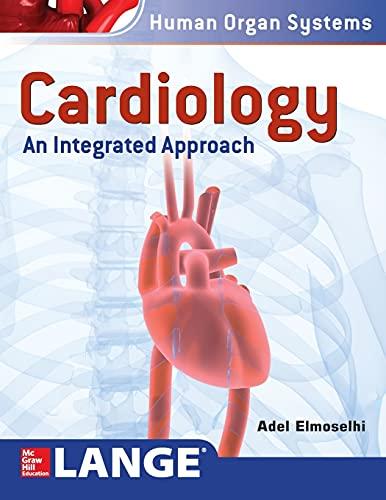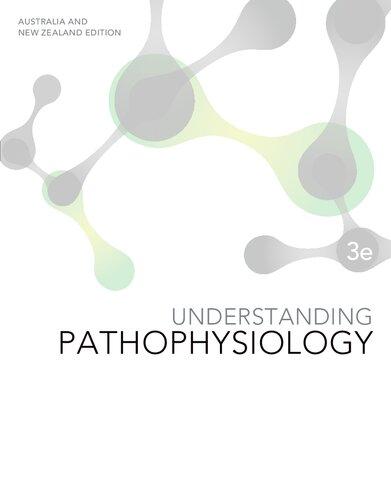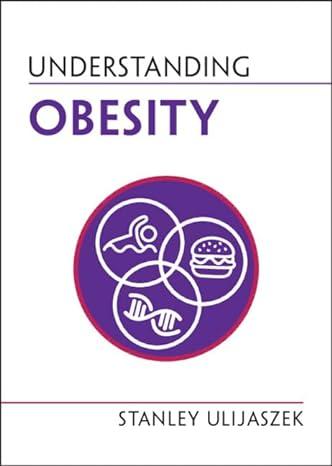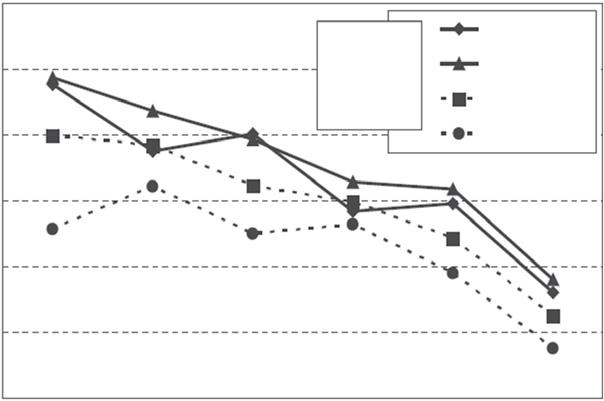Understanding Obesity (Understanding Life) Ulijaszek Visit to download the full and correct content document: https://ebookmass.com/product/understanding-obesity-understanding-life-ulijaszek/
More products digital (pdf, epub, mobi) instant download maybe you interests ...
Obesity and Gynecology 2nd Edition Tahir A. Mahmood (Editor)
https://ebookmass.com/product/obesity-and-gynecology-2nd-editiontahir-a-mahmood-editor/
Trapped: Brides of the Kindred Book 29 Faith Anderson
https://ebookmass.com/product/trapped-brides-of-the-kindredbook-29-faith-anderson/
Eating Disorders and Obesity, Third Edition: A Comprehensive Handbook 3rd Edition, (Ebook PDF)
https://ebookmass.com/product/eating-disorders-and-obesity-thirdedition-a-comprehensive-handbook-3rd-edition-ebook-pdf/
Gifts, Glamping, & Glocks (A Camper & Criminals Cozy Mystery Series Book 29) Tonya Kappes
https://ebookmass.com/product/gifts-glamping-glocks-a-campercriminals-cozy-mystery-series-book-29-tonya-kappes/
Neuroscience for Neurosurgeons (Feb 29, 2024)_(110883146X)_(Cambridge University Press) 1st Edition Farhana Akter
https://ebookmass.com/product/neuroscience-for-neurosurgeonsfeb-29-2024_110883146x_cambridge-university-press-1st-editionfarhana-akter/
Understanding Homeland Security
https://ebookmass.com/product/understanding-homeland-security/
Chronic Total Occlusions-A Guide to Recanalization, 3e (Nov 29, 2023)_(1119517273)_(Wiley-Blackwell) Ron Waksman
https://ebookmass.com/product/chronic-total-occlusions-a-guideto-recanalization-3e-nov-29-2023_1119517273_wiley-blackwell-ronwaksman/
Cardiology-An Integrated Approach (Human Organ Systems) (Dec 29, 2017)_(007179154X)_(McGraw-Hill) 1st Edition Elmoselhi
https://ebookmass.com/product/cardiology-an-integrated-approachhuman-organ-systems-dec-29-2017_007179154x_mcgraw-hill-1stedition-elmoselhi/
Understanding Pathophysiology Christopher Gordon
https://ebookmass.com/product/understanding-pathophysiologychristopher-gordon/
UnderstandingObesity Mostpeoplehavesomedissatisfactionorconcernaboutbodyweight,fatness, orobesity,eitherpersonallyorprofessionally.Thisbookshowshowthe popularunderstandingofobesityisoftenatoddswithscientificunderstanding,andhowmisunderstandingsaboutpeoplewithobesitycanfurthercontributetotheproblem.Itdescribes,inanapproachableway,interconnected debatesaboutobesityinpublicpolicy,medicineandpublichealth,andhow mediaandsocialmediaengagepeopleineverydaylifeinthosedebates.In chaptersconsideringbodyfatandfatness,genetics,metabolism,foodand eating,inequality,blameandstigma,andphysicalactivity,thisbookbrings separatedomainsofobesityresearchintothe fieldofcomplexity.Bydoingso, itaidsnavigationthroughtheminefieldofmisunderstandingsaboutbody weight,fatnessandobesitythatexisttoday,afterdecadesofmostlyfailed policiesandinterventions.
StanleyUlijaszekisananthropologiststudyingobesityfromevolutionaryand culturalperspectives.Hehasundertakenresearchinternationally,inboththe GlobalNorthandSouth.HeisDirectoroftheUnitforBioculturalVariation andObesity(UBVO),UniversityofOxford,whichfocusesonculturaland policyaspectsofbodyfatnessandobesity.
The UnderstandingLife seriesisforanyonewantinganengagingand concisewayintoakeybiologicaltopic.Offeringamultidisciplinary perspective,theseaccessibleguidesaddresscommonmisconceptions andmisunderstandingsinathoughtfulwaytohelpstimulatedebateand encourageamorein-depthunderstanding.Writtenbyleadingthinkersin each field,thesebooksareforanyonewantinganexpertoverviewthat willenableclearerthinkingoneachtopic.
SeriesEditor:KostasKampourakis http://kampourakis.com
Publishedtitles:
UnderstandingEvolution
UnderstandingCoronavirus
UnderstandingDevelopment
UnderstandingEvo-Devo
UnderstandingGenes
UnderstandingDNA
UnderstandingIntelligence
UnderstandingCancer
UnderstandingRace
UnderstandingSpecies
Understandingthe Christianity–Evolution
Relationship
MichaelRuse9781009277280
UnderstandingLiving Systems RaymondNobleand DenisNoble 9781009277365
Understanding Reproduction GiuseppeFuscoand AlessandroMinelli 9781009225939
UnderstandingCharles Darwin ErikL.Peterson9781009338592
UnderstandingObesity StanleyUlijaszek9781009218214
Forthcoming:
UnderstandingCreationism GlennBranch9781108927505
UnderstandingtheNature–NurtureDebate EricTurkheimer9781108958165
UnderstandingObesity STANLEYULIJASZEK UniversityofOxford
ShaftesburyRoad,CambridgeCB28EA,UnitedKingdom
OneLibertyPlaza,20thFloor,NewYork,NY10006,USA
477WilliamstownRoad,PortMelbourne,VIC3207,Australia
314 –321,3rdFloor,Plot3,SplendorForum,JasolaDistrictCentre, NewDelhi – 110025,India
103PenangRoad,#05–06/07,VisioncrestCommercial,Singapore238467
CambridgeUniversityPressispartofCambridgeUniversityPress&Assessment, adepartmentoftheUniversityofCambridge.
WesharetheUniversity’smissiontocontributetosocietythroughthepursuitof education,learningandresearchatthehighestinternationallevelsofexcellence.
www.cambridge.org Informationonthistitle: www.cambridge.org/9781009218214
DOI: 10.1017/9781009218184
©StanleyUlijaszek2024
Thispublicationisincopyright.Subjecttostatutoryexceptionandtotheprovisions ofrelevantcollectivelicensingagreements,noreproductionofanypartmaytake placewithoutthewrittenpermissionofCambridgeUniversityPress&Assessment.
Firstpublished2024
AcataloguerecordforthispublicationisavailablefromtheBritishLibrary
ACataloging-in-PublicationdatarecordforthisbookisavailablefromtheLibrary ofCongress
ISBN978-1-009-21821-4Paperback
CambridgeUniversityPress&Assessment hasnoresponsibilityforthepersistence oraccuracyofURLsforexternalorthird-partyinternetwebsitesreferredtointhis publicationanddoesnotguaranteethatanycontentonsuchwebsitesis,orwillremain, accurateorappropriate.
‘Thisexcellent,highlyaccessiblebookisforanyonewhostrugglestomake senseoftheconflictingportrayalsofobesityinourmediaandacross society.StanleyUlijaszektakesthereaderonafascinatingjourneyfrom geneticstoultra-processedfoods,fromswimmingtostigma.Heexplores thelatestsciencetounpickassumptionsandmisconceptionsaboutobesity inwaysthatarebothenlighteningandentertaining,throwingfreshlighton thishighlycomplexchallenge.’
HarryRutter,ProfessorofGlobalPublicHealth,UniversityofBath
‘Thisisagem!Inparticularforsomeoneenteringobesityresearchwitha wishofacquiringabroaderperspectiveofacomplexarea.Professor Ulijaszek’sprofoundknowledge,rangingfromsocial,anthropologicalto biologicalaspectsofobesityisgenerouslyshared.Heprovidesthereader withthekeystepsonhowtheconceptsofobesityhavedevelopedhistoricallyandhowthisimpactsonthehumanbeingtoday.Thewritingiscrisp andclear,simplyadelighttoread.’
FredrikKarpe,ProfessorofMetabolicMedicine,UniversityofOxford
‘ Therisingrateofobesitydespitescienti fi candmedicaladvancesand disseminationthereofisacomplicatedparadox – onethatwarrants careful,thoughtfulassessment.StanleyUlijaszekhasfurnishedjust suchanassessmentinthishighlyengagingandaccessiblebook,which deftlydissectsprominentnarrativeaxiomsofthepublicdiscourseof obesityandclari fi es,ineachcase,theparticulardisconnectsbetween scienceandpopularunderstanding.It’ slongbeenclearthatobesityisnot simplyamatterofbiology,noritsredressoneoftherightpracticeor policy.Accordingly,thiscarefulparsingisavaluableandvitalcontributiontounderstandingthemyriadcontextsandentanglementsthatshape publicunderstandingsofobesity,aswellaswhatproductiveresponses mightlooklikeinthatcomplicatedterrain. ’
HeleneA.Shugart,DistinguishedProfessorofCommunication, UniversityofUtah
‘Obesityisacomplexproblem,butinthishandybook,ProfessorStanley Ulijaszekmasterfullyexplainsandsimplifiesallofthenuancesfromcauses toeffectstosolutions.Withtheuniqueperspectiveofananthropologist focussedonfoodandbehaviour,heisabletocarefullyexplaininreal
simplelanguagewhytheanswertomanyoftherecurrentquestionsis “Yes andNo”.Thingsaren’talwaysasstraightforwardastheyseembutherewe haveeasy-to-understandexplanationsofalltheimportantaspectsinthe obesityequation,fromgenestobrains,thebugsinyourgut,theplace whereyoulive,thefoodweeatandhowit’sdesignedandmarketedby foodcompanies.’
MichaelI.GoranPhD,ProfessorofPediatricsandViceChair forResearch,Children’sHospitalLosAngelesandKeckSchool ofMedicineattheUniversityofSouthernCalifornia,andauthor of Sugarproof
‘UnderstandingObesity reflectsonallaspectsofobesity,fromthemore individualtothemoresocietal:genetics,epigenetics,metabolism,stigma, thefoodenvironment,foodcompanies,healthinequalitiesandinsecurity … Writteninaclearandengagingstyle,itprovidesanaccountofthecomplexityofobesity,callingformultifaceted,carefullyconsideredresponses,and invitingus – ultimately – tobemorecompassionatehumanbeingstowards oneanother.Thisbookcouldonlyhavebeenwrittenbysomeonesuchas StanleyUlijaszekwhohasimmenseinterdisciplinaryexpertise,aninquisitive mindandagenuineworldwideview.Asmallbutmightybook!’
AmandineGarde,ProfessorofLaw,UniversityofLiverpool
Foreword Foodhasbecomeacentralaspectofourlives;notonlybecauseweneeditin ordertolive,butalsobecauseithasacquiredacentralpartinoursocializing –fromfamilygatheringstogoingoutwithfriends.Irecallreadingsomewhere aboutaperson’sconcernswithfood: ‘Ispentalldaythinkingaboutmynext mealandabouthowtoloseweight.’ Anicemealoffersenjoyment,evenmore ifitissharedwithgoodcompany.ButasStanleyUlijaszekexplainsinthe presentbook,intoday’ssocietieswherefoodisplentiful,eatingforpleasure canresultinobesity.Andthiscanbeabigproblemforatleasttworeasons: healthproblemsandpublicshaming.Thisisthenwhenwebegintoask ourselves: ‘AmItoofat?’; ‘Isitduetomygenes?’; ‘Isitduetomymetabolism?’; ‘Arefoodcorporationsorsocietytoblame?’; ‘ShouldIblamemyself?’; ‘Should Ieatless?’; ‘ShouldIgooutmore?’ Ulijaszekconsidersallthesequestionsone aftertheother.Theresultisamarvellousbookthataddresseswidespread misunderstandingsaboutobesity.Thingsaremorecomplicatedthanwe wouldlikethemtobe,andthereforetheanswersandthepotentialsolutions toourconcernsarefarfromsimple.Whatwecandoistobegintorealizewhat theproblemreallyis,andwhatareitsmultiplecauses.Onlythenwillwebe abletodealeffectivelywithit.Itisnotonlyaboutwhatyoucanandcannot control.Itisnotonlyaboutyouoronlyaboutsociety.Itisnotonlyabout overeating,anditisnotonlyaboutexercise.Readingthisbookwillmakeyou seeobesityinanewlightandreconsideryourviewsaboutit.
KostasKampourakis,SeriesEditor
Preface Obesityisoneofthoseconfusingissueswhereeveryonehasanopinion,and whereeveryoneisinvestedintheirownopinionbeingright.Why?Because therearefewthingsaspersonalasyourownbody,andmostpeopleinwealthy societiesareunhappyordissatisfiedwiththeirsinsomeway.Oftenthisisin relationtobodyweightand/orfatness.Therichandfamousarenotexemptin thisregard.OnedayElonMuskwillbepartofhistory,butrightnowhe medicateshimselftowarda fitbody(alongwithsomedietaryhelpand workingout)withthelatestanti-obesitydrug.Eventhoughitisnowpossible, withinconstraints,totakearegularjabtoreducebodyfatness,thatisnotthe endofthestory.Silverbullet/singleresponsesolutionsusuallyonlyworkfor simpleproblems.Theycanworkforcomplicatedproblemstoo,buttheycan leaveatrailofsocialandpoliticalconsequences,aswiththeemergenceof vocalanti-vaxxersintheshadowoftheCOVID-19vaccineroll-out.Obesityis neithersimplenorcomplicated.Itiscomplex,involvingtheinteractionof largenumbersoffactorsoperatingintheevolutionary,historical,andrecent pastthroughtothepresentday,creatingpredispositionstoit,andexpression andemergenceofit,inresponsetomultipletriggersinsocialandphysical environmentsnow.Thisbookneedstoexist,toinforminanapproachable waythedebateaboutobesityinpolicy,medicine,publichealthandeveryday life,becausebodyfatnesswillcontinuetorollasastory,aconcernandan issue,ifonlybecauseofthecomplexnatureofitsproductionandthefactthat mostpeoplehavesomeconcernabouttheirbody.
Fromthestartofmyengagementwithobesityassomethingtoresearchand understand,backinthe1990s,myfocushasbeenofthenon-medicaltype.
Concentratingonsocialandsocietalaspectsofbodyfatness,asbefitsan anthropologist,hasallowedmetostudyrelationshipsofobesitywithpolitics andeconomics,metricsofthebodyandofthebodyinsociety,offoodand eating,ofurbanismandofphysicalactivity.Withextraordinarilytalented colleagues,Ihaveinvestigatedhowobesityisrelatedtosocialandphysical environments,toinequality,insecurity,neoliberalism,colonialism,and stigma,formingtheimperfectstorm,madeupdifferentlyindifferentcontexts, thathasprovenimpossibletocalm,evenwithallthepromisesthathavebeen madeto ‘conquer’ obesityacrossthedecades.
Theissuesassociatedwithobesityareinterconnectedandentangled.The chaptersofthisbookofferunderstandingslocatedinevolutionandbiology, butalsosocietyandpolitics,aswellascomplexity.Eachchapterpullsonone orseveraloftheentangledthreadsthatconstituteobesityasanissue,shedding light,bustingmyths,andclearingupsomeofthemanymisunderstandings aboutit.Thewords ‘obesity’ , ‘fatness’ and ‘weight’ areusedtogivediscursive substancetothreeoverlappingbutslightlydifferingideas.Bodyweightisjust that – thesumtotal,inpoundsorkilograms,ofwhatsomeoneweighs.When Iputonortakeoffbodyweight(asanadult)Iusebodyweightasaproxyfor gainingorlosingbodyfatness.Thisisaworkingapproximation,sinceformost peopleweightchangeislargelyduetochangeinfatmass(butnotalways – it canalsobeduetowhethertheyarehydratedornot,workingoutandgaining muscle,orbed-riddenwithillnessandlosingmuscle).Bodyfatisoneconstituentofbodyweight(inadditiontomuscle,bone,extra-cellular fluid)andis distributedacrossthebodywithincellsoftheadiposetissue.
Bodyfatisdemonizedbymanyinanindiscriminateway,butactually,much bodyfatandadiposetissue(accordingtoitslocation)doesusefulandlifeenhancingthings.Obesityisbodyfatnessexcessiverelativetonorms,toan extentthatitisassociatedwithdiseaseanddeath.Theterm ‘obesity’ isamedical oneandhasbeencontestedbypeoplewhodisagreewiththelabelbecausethey disagreewithbodies(theirownandofothers)beingsubjectedtonorms,and becausethelabelitselfisstigmatizing.Muchmoreissaidaboutthisin Chapter1.Geneticassociationswithobesityandbodyfatnessareplentiful butdifficulttocomprehendinaneasymanner,andthisisthesubjectof Chapter2.Obesitymayneverhaveexistedinprevioushumanevolutionary historyexceptinindividualswithcomparativelyraregenetics – so-called
monogenicobesity.Inthepresentday,peoplewithmonogenicobesityrepresentaverysmallproportionofallpeoplewithobesity,thevastmajority developingaso-called ‘common’ forminvolvingmanygenesandgeneregions. Thereareseveralwaysofunderstandingobesityfromevolutionaryandgenetic perspectives,andthesearealsodiscussedinthischapter. Chapter3 considers themechanismsofenergymetabolismastheyrelatetoobesity,engagingwith thephysiologyofbodyfatdeposition,genetics,andneurobiologyofappetite.
Chapter4 goesontoconsiderobesityinrelationtothefoodenvironment, focusingonsystemsoffoodproductionanddistributionthathaveledtothe widespreadavailabilityofcheapultra-processedfoods(UPFs).Whatfollowsin Chapter5 isanexaminationofhowsocialprocessesinfluenceobesityrates. Stressandinequalitiesinincomeandeducationplaytheirpart,asdoesthe insecuritythatcomeswithlivinginaneoliberalsociety.Stillinthesocial domain, Chapter6 unpackshowbodystigmaworks,andhowitcontributes toobesity,andhowinturn,obesitycontributestostigma.Itconsidersthe moralizingbackgroundthatunderpinsthisnastysocialevaluativepractice, andhowthispracticeisusedtomaintainsocialhierarchyinsocietieswhere thereisplentifulfood.In Chapter7,reasonswhyitisdifficultformanypeopleto regulatetheirappetitesaregivenandexpandedupon.Somepeoplecanvery easilyovereatwithoutnoticeableeffect,whileothersjustneedtosniff adoughnut(metaphoricallyspeaking)togainweight.Thereisamismatch betweenourfundamentalbiology,whichhasevolvedtowanttoeatand find satisfactionincalories,andfoodproductionsystemsthatprovidecalorieseasily andcheaply.ThequestionofwhyUPFsarelikedsomuchisconsidered,aswell asthequestionofhownotalldietarycaloriesareequal. Chapter8 examines physicalactivityinrelationtobodyweight,andthephysicallocationofadipose tissueinandonthebody. Chapter9 considershowthemanyfactorsassociated withobesitycombineinacocktailofcomplexity,whichvariesincomposition fordifferentpopulationsandcountriesacrosstime.Whilecomplexityiswhere obesityresearchhastravelledto,mediamessagingaboutbodyfatnessand obesityhashardlychangedacrossdecades,makingitdifficulttodisseminate themostcurrentknowledgeaboutobesitytobroaderaudiences.Thelogicof mediarepresentationofobesityisthusalsoconsideredinthischapter.
Throughoutthebook,thereiscommentaryaboutwhatcanbedoneatpopulationlevelingovernanceandpolicy,andbyindividuals,andthrough
personalagency,tocometotermswithobesity,bodyfatnessandbodyweight. WhereinthetextIgivebriefsnatchesofconversationswithpeople,thenames are fictionalized,buttheparaphrasedconversationsarereal,unlessIstate otherwise.Ihopeyou findthebookasinterestingtoreadasithasbeento write.AboveallIhopeyou finditusefulinhelpingyoutostructurehowyou thinkaboutthiscomplextopic.Foranyoneinterestedinfollowingupon anything,myemailaddressis stanley.ulijaszek@anthro.ox.ac.uk.
Acknowledgements IespeciallythankyoungercolleagueswithwhomIhaveworkedonobesity andrelatedmattersfortheirhonestandgenerouscritiqueofvariouschapters. Yourinputhasstrengthenedthiswork.Abigthankyougoestoeachof – Amy McLennan,oftheAustralianNationalUniversity;HeleneShugart,ofthe UniversityofUtah;MichellePentecost,ofKing’sCollegeLondon;Tanja Schneider,oftheUniversityofStGallen;KarinEli;ZofiaBoni,oftheAdam MickiewiczUniversity,Poznan;TessBirdandSabineParrish,bothofthe UniversityofOxford;AnneKatrineKlebergHansen,oftheRoyalDanish AcademyofArts,Copenhagen;ThaoDam,ofMaastrichtUniversity;and EstherGonzalez-Padilla,ofLundUniversity.
IthankCarolinePotter,oftheUniversityofOxford,forhercontinuedinvolvement intheUnitforBioCulturalVariationandObesity(UBVO – www.oxfordobesity .org)attheUniversityofOxford,mostrecentlyasCo-Director,withmyselfand KarinEli,oftheUniversityofWarwick.Thisinterdisciplinarynetworkof researcherswasformedin2007,andIthankDeviSridhar,oftheUniversityof Edinburgh,forherinvolvementatitsinception.
IthanktheMagicTable,agroupofscholarsandwriterswhoshareandcritique eachother’swritinginverykindandconstructiveways.Iamveryprivilegedto bepartofit.MembersoftheMagicTableareacknowledgedbynameabove –youknowwhoyouare.
Itiswonderfulthatmyeditors,KostasKampourakisandJessicaPapworth,are investedinmakingthisthebestofallpossiblepopularbooksonobesity. Thankyou,Kostas,foryourgenerouscritiqueoftheentirebook.
Ithankmanyofthegreatandthegoodinobesityscienceandbeyond,that Ihavehadtheprivilegeofmeetingandknowing,forgreatdiscussionsand conversationsaboutthebody,fatness,andobesity.Thankstoall – GilesYeo, AmandineGarde,WilliamDietz,RebeccaPuhl,KarenThrosby,Bethan Evans,MarionNestle,JaneWardle,RobertFogel,AdamDrewnowski,Gema Frubeck,JohnKomlos,RachelColls,MeganWarin,MaciejHenneberg, MichaelDavies,VivienneMoore,CatPause,ThorkildSorensen,Erik Hemmingsson,LineHillesdal,PaulinaNowicka,ClaudeMarcus,Finn Rasmussen,LenaHansson,FredrikKarpe,DavidHull,MichaelStock,Dame NancyRothwell,HannahGraff,SirMichaelMarmot,JonathanWells,Tim Lobstein,PhilipJames,AnnaLavis,EmmaJayneAbbots,AnnaCarden-Coyne, KelvinChan,JamesStubbs,CatrionaBonfi glioli,GeofRayner,Boyd Swinburn,BrunoLatour,MichaelGoran,EmilyHenderson,Heather Howard,OseaGiuntella,DanNettle,LordSirJohnKrebs,RobinDunbar, MikeRayner,CeciliaLindgren,DannyDorling,HayleyLofink,AvnerOffer, SusanJebb,KeithFrayn,JimmyBell,JenniferBaker,NicTimpson,George DaveySmith,KatePickett,RichardWilkinson,ChrisForth,MichaelGoran, MichelBelot,FrancoSassi,ShirleneBadger,MelWenger,VivienneParry, RosieKay,OliWilliams,EmmaRich,HarryRutter,SusanGreenhalgh.To anyoneImayhaveomitted,Igivemydeepapologies.
IthankFellowsandstudentsoftheverywonderfulStCrossCollegeOxford,for stimulatingdiscussions,usuallyoverlunch,aboutobesity,bodyfatnessandthe body,andmanymorethingsbesides – howtothinkaboutcomplexity,globalization,insecurity,forexample.Thingsthatrelatetoobesity,andmuch,muchmore.
Ithankmembersoftheveryinclusiveandextensiveopenwaterswimming communityintheUnitedKingdomandbeyond,especiallymembersofthe SerpentineSwimmingClub,London,andfellowswimmersinOxfordand Oxfordshire,fortheircamaraderie,bonhomie,andyear-roundimmersionin theblueoutdoors.Manywater-sidediscussions(oftenoverahotdrink)on manyoftheissuespresentedinthisbook,withinterestednon-specialists (mostlyswimmers),havehelpedmepresentthisworkinanaccessiblestyle.
AboveallIthankmyimmediatefamily – Pauline,Michael,Alexandra,Peter –fortheirinterestasIhavebeenwritingthisbookintoexistence,andinkeeping megrounded.
1 I’mTooFat HotPotato Ihavemetfewadultswhoarehappywiththeirownbodies,atleastinWestern societies.Buteveninnon-Westernsocieties,manypeopleareunhappywith theirbodies.Theexactnatureofthisunhappinessvaries,butwhatoverwhelminglydominatesisthethought,whetherobjectivelytrueornot,that theycarrytoomuchweight,andfollowingthat,thethoughtthattheyreally shouldloseweight.Ihavemetveryfewpeoplewhoactivelywanttoputon weight,andtheyhavealmostallbeenofathleticdisposition,andtheweight gainsoughtisusually(butnotalways)intermsofmuscle.Somepeopleare entirely ‘fat-phobic’ andnotpersuadedthatsometypesofbodyfatmight actuallybegood,healthyeven.Manypeopledon’tknowthatthereare differenttypesoffatdeposit,andthatsomedepositsoffatnesscarrylimited ornonegativehealthconsequences – aroundthebuttocks,hipsandthighs,for example.Bodyfatnessisa ‘hotpotato’ issueformanypeople;Ilikehot potatoes.
Butwhatisexcessorpathologicalbodyfatness?Howwouldyoudefineit, beyond ‘IknowitwhenIseeit’?Andwhatarethedifferenttypesofbodyfat? AnddoesthefatIeatbecomethefatonmybody?Thisbookisforallthe peoplewhoworryabouttheirweightand/ortheirbodyfatness,whichisto say,mostpeople.Bodyfatness,goodfat,badfat,whatIcalluglyfat,the imperfectscienceofhowfatnessrelatestoillness,howobesityismeasured, andhowandwhypeoplejudgepeoplewhocarryextraweight – allofthese thingsareconsidered.
Thedifferenttypesofbodyfatevolvedalongwiththerestofourbodies.For ourancestors,consumingenergy-densefoodsandconservingdietaryenergy throughgainingweightandasbodyfatcouldhaveprovidedareproductive advantagethen,ifnolongerinthepresentday.Suchpotentiallyevolved tendenciesandmechanismstowardspositiveenergybalanceandweight gainarecomplex,andcomplexityismylensforviewingobesity,through approachesasdiverseasevolutionarytheory,physiology,neurobiology,sociologyandanthropology.
HowdidIgetinterestedinobesityasasubjectofresearch?Iamananthropologist,notapublichealthspecialist,noramedic.Iaminterestedinpeople andcommunities,lesssoinriskgroups,andevenlesssoindiseaseand disability,exceptinasfarastheyimpactonpersonalandsociallives. Obesityisfarmorecomplexthanbeingadiseaserelatedtobodyfatness,as somehaveframedit.Itissomethingthatcansociallydividepeople,bringing outtheworstinsome,withstigmatizationandshamingofpeoplecarrying excessbodyfatness.Ifitisadisease(whichmanyexpertsandhealthagencies thinkitis),itisasmuchasocialdisease(intermsoffatphobiaandstigmatization)asamedicalone.Ibecameinterestedinbodyfatnessandobesity becausemyanthropological fieldworkinPapuaNewGuinea(PNG)into traditionalsubsistenceandnutritionalecology(thatis,howpeople’snutritionalneedsareattainedintheenvironmentinwhichtheylive)tookmethere. I firstwenttothePurariDeltaregionofthecountryinthelate1970s,when undernutritionandinfectionwerethebighealth-relatedissues.IfeltIhad understoodanddefinedtheproblemquitewellbythetimeIleftsometwo yearslater,wellenoughtohelpdefinepoliciesandinterventions,tomake adifference.WhenIwentbacktothisruralarea14yearslater,mypleasurein seeingthegreatreductioninundernutritionwascancelledoutbyseeingmany peoplewithovernutritionandobesity,whichhadpreviouslybeennonexistent.Icouldn’tfathomhowthiscouldhavehappenedinlessthan ageneration.Inthemid-1990sIswitchedfocustoobesity,notbecauseof theemergentpublichealthproblemassociatedwithit,butbecauseofthis swiftanddramaticshiftinnutritionalhealthinagroupofpeopleIhadworked withinremotePNG.Itdidn’t fitthedominantnarrativeofthetime,whichwas ofobesityasaproblempredominatingintheGlobalNorth.Iamalways attractedbyananomaly.
Subsequent fieldworkintheCookIslands,andanalysisofinequalityand obesitydatafromsocialistandpost-socialistPoland,bothgotmethinking andresearchingthedifferentwaysinwhichobesityseemedtomanifestitself indifferentpopulations.Bythemid-2000s,overahundredfactorsassociated withobesityhadbeenidentifiedbyresearchersacrossthe fieldofstudy,andit wastimeforanewapproach,harnessinginteractionandlayering,whichled me,viaobesitypolicythink-tankwork,tocomplexity,andsettinguptheUnit forBioCulturalVariationandObesity(UBVO)in2007attheUniversityof Oxford.TheworkofthisgrouphassinceinformedobesitypolicyattheWorld HealthOrganization(WHO),andthegovernmentsoftheUnitedKingdom (UK),Denmark,andSweden.
ThisbookisverymuchguidedbytheframingsusedbyUBVO,usingecological,anthropological,socialandpoliticalapproachestobodyfatnessand obesity,andplacingthemwithinabioculturalcontext.Inbioculturalanthropology,therelationshipsbetweenhumanbiologyandcultureareparamount. Withabioculturalapproachtoobesity,itistheanthropologyofbodyfatness thatisinthespotlight – itssocial,cultural,evolutionary,environmental aspects,ratherthanitsmedicalandpublichealthframings,althoughbioculturalapproachesdoinformmedicineandpublichealth.
Theeasynarrativeattachedtoobesity,whichisthatifyoueattoomuchand don’tgetenoughexerciseyouwillputonbodyfat,isn’thelpfulforunderstandingdifferentpatternsofobesityincreaseacrosstheworld,GlobalNorth andGlobalSouth.Acrossdecadesofresearchintoobesity,inAustralia,India, Denmark,Sweden,Poland,theUnitedStates(US)andtheUK,Ihavetripped overmanymisunderstandings.Myhopeisthatthisbookwillhelpyouwalk throughtheminefieldofmisunderstandingwithmoreconfidence.Ican’t guaranteethatyouwon’tstumble – thereareprobablystillmanyunexploded misunderstandingsaboutobesity – buthopefullythisbookcanhelpguideyou through.
BodyFat – WhatIstheGoodofIt? Innature,bodyfatnessisusuallyagoodthing.Asaspecies,humanshave greatercapabilityofaccumulatingbodyfatthannon-humanprimates. Placingthisinevolutionarycontextrevealstheadaptivevalueofbodyfatness.
Therapidbrainevolutionthatcamewiththeemergenceofour Homoerectus ancestoralmost2millionyearsagowasprobablyassociatedwithincreased bodyfatnessaswellasdietquality – thegreateravailabilityofdietaryanimal fatandcholesterolislikelytohaveallowedencephalization,orincreased brainsizerelativetothesizeofthebody.Higherlevelsofbodyfatnessand lowermusclemassrelativetootherprimatespecieshaveallowedhuman infantstoaccommodatebraingrowthbyhavingadequatestoredenergyfor brainmetabolism.Sinceenergystoresarevitaltosurvivorshipandreproduction,theabilitytoconserveenergyasadiposetissuewouldhaveconferred selectiveadvantageinthefood-constrainedenvironmentsthatearly Homo sapiens wouldhavebeenperiodicallyexposedto.Fatnesswascrucialtothe reproductionofancestralhumansandcontinuestobesoincontemporary society.Infemalesitislinkedtofertility,andovarianfunctionissensitiveto energybalanceandenergy flux.Atanybodymassindex(BMI),femaleshave agreaterproportionoftheirbodyweightasfatthanmales.Furthermore,they haveagreaterproportionoftheirfatinthelowerbodythandomales,fat whichismobilizedduringpregnancyandlactation.
Theseverysuccessfuladaptations – inenergymetabolism,infatstorage – have becomeburdensinthepresentday,asglobalfoodsecurityissueswere conqueredinthe50yearsorsosincethe1960s,atleastinrelationto productionofdietaryenergy.Thiswasaperiodwhentheworld’sthendominantnutritionalproblem,thatofundernutrition,couldhavebeen fixed, butinstead,asteadydeclineinpeoplesufferingundernutritionwastosome extentmatchedbyrisingobesity.Therearemanyplacesinthepresentday whereanindividualmightevenexperiencebothundernutrition(especiallyin earlychildhood)andovernutrition(inadultlife).Moreaboutthisin Chapter2. Thisriseinobesityisundoubtedlyduetoawiderangeofassociatedand interrelatedfactors,withtheinundationoftheglobalfoodmarketwithcheap calories(atriumphofindustrialagricultureifyouwill)havingunderwrittenit.
WhatIsObesityandHowIsItMeasured? Obesity(asdefinedbycontemporarymeasuresofthebodymassindex,orBMI) wasretrospectivelyidentifiedbyeconomichistorian JohnKomlos,ofthe UniversityofMunich,asanemergentpopulationphenomenonamongNorth
Americanmeninthenineteenthcentury.Obesitythenroseacrossthetwentieth century,acceleratingwiththeriseofglobalcapitalismandneoliberalismfrom the1980sonwards.ItbecameamatterofeconomicconcernintheUSandthe UKinthe1990s,whenitsdirecthealthcostsbecameclear.Economics,medicineandpublichealthhaveframedobesityasparticulartypesofproblemtobe controlledormanagedinsomeway.However,itisnotaproblemforeveryone. Norisitthesameproblemforeveryoneconcernedaboutobesity.So,forwhom isobesityaproblem,andwhy?
Thiswasaquestionweposedinthevery firstseminarseriesofUBVO. Researchersinterestedinobesityasanobjectofresearchhavedifferent waysofthinkingaboutit,whichisonlynaturalgiventhatresearcherswill engagewithaproblemwiththeirbesttheory,notsomeoneelse’s – theycan onlydowhattheyhavetrainedtodo.Whatisinterestingishowdifferently differentdisciplinesframeobesityandexcessbodyfatness.Forpolitical scientists,obesityisaproblemofgovernance,whileforepidemiologistsitis oneofacceleratingmortalityandmorbidity.Forsomeeconomists,itisan unintendedconsequenceofsometypesofeconomicsystem;forfoodsystems analysts,aproblemofincompletespecification.Thereweremanyapproaches takenbyresearcherspresentingatthis firstUBVOseminarseries,confirming obesitytobeasubjectthatrequiresinterdisciplinaryapproaches.Forpeople withobesity,thereareotherconsiderations,likestigma,blameandoccupationalglassceilings.Formanyyoungadultswithobesitywhodonotsufferthe chronicdiseaseconsequencesofit,itmaynotbeseenasaproblematall. Whatappearstobecommonlyacceptedisanevolutionarybasistobody fatness,whichiswhereIturnnext,followedbyadiscussionofhowexcess bodyweightisdefined.
Youcangofarinunderstandingobesitywithoutde finingit,anditsde finition hasinrecentdecadesbeenlinkedtounderstandingitasadiseasestate(or not),associatedwithmortality(ornot).In 2014,theWHOde finedobesityas ‘abnormalorexcessivefataccumulationthatmayimpairhealth’.What exactly ‘abnormal’ or ‘excessive’ levelsofbodyfatnessareinrelationto healthcontinuetobedebatedamongobesityresearchers.Therearesome clearanswerstothesequestions,butonlyattheextremesofbodyweight andfatness.Thisisgoodenoughformedicstoact – withobesitysurgeryat thehighextremeofbodyfatness,andtreatmentforanorexianervosaatthe
low – butforpublichealth,mildormoderateobesityiscolouredinshades ofgrey.Atwhatpointshouldanyprofessionalbodyorinstitutionintervene? Thereisnoclearandunambiguousanswer.Forthesocialscientist,how medicsdealwithsevereobesityisasubjectofstudyinitsownright,asishow publichealthauthoritiesdefineandactonlessextremeformsofbodyfatness.
Thestudyofbodilynormsandhowtheyaresociallyenforced,andunderstandingsofwhatconstituteshealthforanyindividualorgroup,aresubjectsof investigationforanthropologists.Withmanydifferentstakeholdersand approaches,itiseasytoseewhatafraughtmatterobesityhasbecome.
Thequestion ‘Isobesityadisease?’ hasneverbeenfullyanswered.Many agencies,governmentalandother,viewitassuch,withtheWHOandthe USNationalInstitutesofHealthhavingdonesofromthe1990s.Jantinade Vries,thenoftheUniversityofOxford,arguedin2007againstclassifyingitas adisease.Fromanevolutionaryperspective,sheassertedthatifsomebodily conditionseitherconferevolutionaryorbiologicaladvantageorarecommon toaspecies,theyshouldnotberegardedasdiseases;onlyifbodilyconditions arerareandfalloutoftherangeofmorphologicalnormalityshouldtheybe consideredthus.Bodyfatnessistypicalofthehumanspecies,andonthis basis,obesitycannotbeconsideredtobeadisease.Fromasocietalperspective,shearguedthatobesitycanbeframedasdiseasebecauseitrepresents bodilydeviationfromnormsandsocialdesirability.GeorgeBray,thenofthe PenningtonBiomedicalResearchCenteratLouisianaStateUniversity,argued intheearly2000sthatobesityisachronicrelapsingneurologicaldisease, requiringlifelongtreatmentormanagement.Lifelonginterventionmeans lifelongemploymentforthoseinvolvedinitstreatment,aswellasthegrowth ofanindustrybuiltaroundanti-obesityinterventions,whichintheUSin2022 alonewasworthnearly150billiondollars.
Whetherdiseaseornot,thereisajudgementcallonhowexcessbodyfatness shouldbemeasured – therearelotsofwaysofdoingit – anditmatters,atleast fortheobesitytreatmentandmanagementindustry.Ifyoudon’thave aconsensusondefiningobesity,youcan’treallyintervene.
Sohowisitmeasured?Thesimplestmeasureoutthereisbodyweight – you juststandonthescaleandjudgeforyourselfaccordingtowhatyouthinkyou shouldweigh.Youmightwanttorelatethattonormsofbodyweight,or
weightforheight,orweightoverheightsquared(theBMI).Ipersonallyignore theBMIwhenconsideringmyownbodyweight.Fortherecord,myBMItips intotheoverweightcategorybutonlyjust.Idon’tagonizeoverit,butmonitor myweight,tryingtoneitherlosenorgainit.Iknowhowmuchattentionand disciplineisneededtoloseweight,andIwanttoavoidthestressofconstant vigilanceoverwhatIeat.Ifyouwanttomeasureexcessbodyfatnessorobesity byBMI,formedicalorpublichealthinterventionforexample,thennorms becomemoreimportant.Weightalonedoesn’ttakeintoaccountdifferences inheightbetweenpeople;ifyouaretaller,youarelikelytobeheavier,just becauseyouarecarryingabiggerskeleton – abiggerframeonwhichtopack bothmuscleandfat.Onemeasureofobesitythatmakesallowanceforthisis weightforheight.Thisdoesn’tentirelyneutralizedifferencesinweightdueto differencesinheight,however.TheBMI – weight(inkilograms)dividedbythe squareofheight(inmetres) – doesabetterjobinneutralizingtheeffectsof heightonweight,butdoessoinafarfromperfectway.
TheBMIwasformalizedforinternationalusebytheWHOin2000,with severalaims:tomaketheassessmentandmonitoringofobesityworldwideas simpleaspossible;toallowpublichealthauthoritiestomakemeaningful comparisonswithinandbetweenpopulations;toidentifyindividualsand groupsatincreasedriskofdiseaseanddeath;tohelpidentifyprioritiesfor interventionatindividualandcommunitylevels;andtogiveabasisfor evaluatinginterventions.Forepidemiologicalinvestigation,thisformalization renderedmeaninglesspopulationestimatesofobesitybasedonmeasures otherthanBMI,orthatuseddifferentnormsorcut-offsforobesity.Inepidemiology,theBMIisusedasaproxyforbodyenergystores,andattheupperend ofapopulationdistributionitshowsstrongbutimperfectassociationswith anumberofchronicdiseasesanddisorders,bothinmorbidityandmortality. Othermeasuressuchaswaistcircumference,waisttohipratio,andwaistto heightratiocompeteverywellwithit,soitisworthconsideringwhytheBMI continuestobeastandardmeasureofobesity.
TheBMIworksjustaboutwellenoughforepidemiologicalandpublic healthwork.Ithasbeenusedforfarlongerthananyotheranthropometric measureandwasthe fi rsttobeappropriatedfortheassessmentofobesity ratesinpopulations.Itiscollected systematically acrosstheworld – noother measureis,toanywherenearthesameextent.Onereasonforthisisthat
heightsandweightsarerelativelyeasytomeasure.Justoveradecadeago, theWHOconsideredswitchingtooneofasmallnumberofmeasuresthat incorporatewaistcircumference,butdecidedagainstit.Thisisbecause changingthestandardmeasureofglobalobesitysurveillancewouldhave throwntheinternationalgovernanceofobesityintodisarray,atatimewhen obesitywasrisingfast(itcontinuestorise).Obesitymeasurementand reportingallowsthetrackingofobesityacrosstimeandindifferentcountries,givingbackgrounddataforanti-obesityinterventions.Inmostcountries,obesityisreportedintermsoftheproportionofadultswithaBMI greaterthan30kg/m 2,althoughlowercut-offsaredeemedappropriatefor peopleofAsianancestry,whosediseaseanddeathriskishigheratanyBMI pointthanforpeopleofEuropeanancestry.ForpeopleofPaci fi cIslander ancestry,highercut-offsaredeemedappropriate,becausesuchpopulations carrylowerdiseaseanddeathriskatanyBMIpoint.
TheBMImeasuredoesalotofworkforpublichealthobesity,butdoesitdoas muchforyouandmeasindividuals?Well,itdepends.WhileBMIcut-offsfor obesityclassificationareseenasmeaningfulforepidemiologicalandpublic healthwork,healthandwell-beingcanbeperceivedquitedifferentlyby peoplewhohavebeenclassifiedashavingobesity.Forexample,Helen Doll,andhercolleaguesattheUniversityofOxford,haveshownthattheselfreportedhealthstatusofadultsintheUKislowamongpeoplecategorizedas havingsevereobesity,withBMIgreaterthan40(Figure1.1),butlowestamong peoplewithanycategoryofobesityalsoexperiencingchronicdisease (Figure1.2).Thus,obesitymaynotbeaproblemforpeoplewithnon-severe obesityiftheydonotalsoexperiencechronicillness.
TwocriticismsofBMIarethatit’snotjusttheamountoffatthatyoucarrythat’s important,butwhereyoucarryit,andthatitcanonlygiveanimperfect measureofoverallbodyfatnessattheindividuallevel.Fatonthethighsand bumprotectsagainstchronicdisease,whilefatintheabdomenharms.Among physically fitpeople,highBMIcanreflectmuscularitymorethanfatness.
NatalieKing,oftheUniversityofLeeds,andhercolleaguesdidastudyof bodycompositionofplayersinthefourteamstakingpartinthesemi-finalsof the2003RugbyUnionWorldCup.NineoutoftenofthemhadaBMIthat wouldcategorizethemaseitheroverweightorobesebytheWHOcriteria, wheninfacttheywereextremelymuscular,andtheBMIpickedthatup.
Self-reported health score
Figure1.1 Distributionofself-reportedhealthscoresbybodymassindex(BMI)category, afteradjustingforage,genderandfrequencyofhealthserviceutilization,intheUK.
JimmyBell,ofImperialCollegeLondon,hasperfectedtechniquesforwhole bodyimagingofhumanbodyfatdistribution.Hefoundthattherearepeople withhighBMIwho,becauseoftheirfatdistribution,donotcarryahealthrisk equivalenttotheirupper-rangeBMI.Asaresult,hecameupwiththeacronym TOFI – thinontheoutside,fatontheinside.ApersonhemightidentifyasTOFI wouldhaveaBMIinthenormalrangebutcarryfatintheirabdomen,carrying ahealthriskasaconsequence.Between10and30percentofpeople classifiedashavingobesitybytheBMIclassificationhavemetabolically healthyobesity(MHO).Thereisnostandardizeddefi nitionofMHO,butall startwithobesityasdefinedbyBMI ≥ 30kg/m2,incombinationwithoneor moreofthefollowingmarkersthatareassociatedwithhealthratherthan chronicdisease:lowfastedserumtriglycerides;elevatedHDLcholesterol serumconcentrations;systolicanddiastolicbloodpressuresinthenormative range;lowfastingbloodglucose;anabsenceofdrugtreatmentfordyslipidaemia,diabetesorhypertension;andnocardiovasculardiseasemanifestations.
